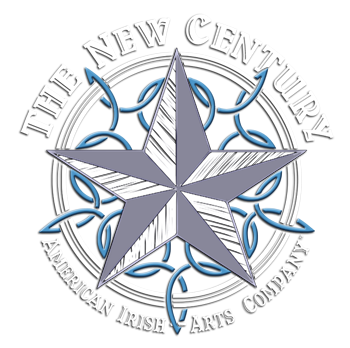
Advertising for Shannon Dunne Dance in Washington, DC.
The Gods of Antiquity poster for the April New Second Sunday Ceili at Liam Flynn's Alehouse.
Louther than life: a short campaign for the benefit of a dashing young singer from Drogheda.
A web ad for a genuine crossroads dance held in 2013, with special guest Michael Tubridy.
The original Yankee Frolics Poster.
Q & A with lead cut-and-paster Peter Brice
New Century: You've been cooking up these ads for a while, and they're pretty different from the Irish music promos we've seen. How did you get started designing in this style?
Peter Brice: I suppose necessity was the mother of invention! I needed ads for a fundraiser I was working on, so I learned Photoshop and drew up a couple posters. I wanted to take a stab at advertising Irish traditional music in a way that's recognizable from the perspective of musicians and dancers. I would see traditional music often misrepresented as, for instance, the last vestige of Celtic Europe or a gathering of fairies and leprechauns enthusiasts, or I see it reduced to an image of a flowing-haired, emerald-garbed woman playing the violin. Musicians and dancers gawk at those depictions because they're alien to our experience of traditional culture and its values. For me, that's evidence enough that the advertising needs tweaking to be in line with the product, you know?
NC: Ahem. We'll be asking the questions here, Mr Brice. So it's about honest advertising?
PB: It's absolutely about honest advertising! But it's also about creating a brand that efficiently translates the values of traditional culture for people who are coming to it for the first time. It's not as though the American media inundates its audience with broadcasts of great fiddle players or biopics on Joe Cooley! Traditional musicians and dancers are often the first point of contact for a person new to traditional music. That's a huge responsibility. The ads I've been making—and even the visual design of the New Century—are intended to facilitate the first exchange by offering a glimpse under the hood at the images, language, and humor that we enjoy as musicians or as dancers. Or at least that I enjoy as myself!
NC: Can’t traditional musicians and dancers introduce their culture on their own?
PB: Absolutely, and they do every time they bring the music to the public. But my own experience as a performer and presenter has been that the conversation—by necessity—often starts and stops at introducing traditional culture. I want more than than that: I want to prepare audiences to appreciate the nuances of beautiful playing, singing, dancing, and poetry. Ads that represent traditional culture help to bring people a little further into our world, and reveal the fervent esteem in which we hold this art form. Fervor, in this case, I think is a pretty strong recommendation.
NC: Most of your ads are retrospective in one way or another, and use historical images. Do you think that pastiche is a necessary vehicle for presenting traditional culture well?
PB: Actually, I do think so—and for a couple of reasons. The first has to do with the ethics of selling. Being that advertising entails an exchange between producer and consumer (namely content for attention) it seems fair that in exchange for the consumer's time, he or she should reap a benefit from reading my ad. So if I have the opportunity to share a bit of history and a bit of humor with someone who's reading our ad, I will. It uplifts the discourse and contributes to the well-being of both parties. I think that's an important tenet for us to maintain because we're not just selling tickets and CDs, we're inviting people to dig in to a musical lifestyle out of which, we might hope, they will derive a sense of meaning or even fulfillment.
The second reason to advertise traditional music from a historical perspective is that, at least for me, the art form is saturated with the past. It was at home in the past because that’s when its artistic standards were set—or so we envision. Not only does traditional music allow us to glimpse the creative minds of artistic thinkers we never could have met, but it shows us how the old people enjoyed music and the gifts of their own genius. When you hear a nice setting of an old tune, you can tell that it's been worn in by the touch of someone's imagination. In the span of two or three hundred years, I don't think our appreciation of those gifts has waned.
I do my best to reveal that appreciation through design, and maybe put people in the mood to receive music in the same spirit. Musicianship is a gift, after all; it's a gift to be able to share it, and it's a gift to be able to enjoy it.
NC: Yeah. Oh, are you done? Sorry, I fell asleep. That's probably all we need. Thanks for your time, Peter.
PB: You're welcome, Peter. It was no trouble at all. Love what you've done with the place!
